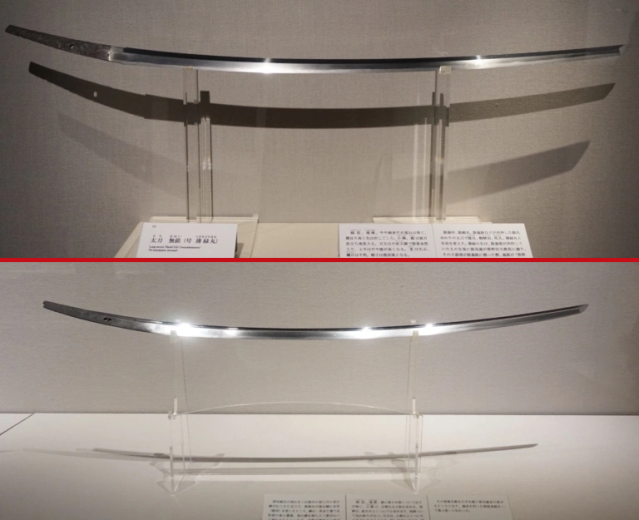
Two of Japan’s most beautiful blades are said to be linked at birth, but a closer look makes some scholars think twice.
Any guidebook will tell you that Nara is a great place to go if you want to see temples or deer, as the central Japanese city has plenty of both. However, right now Nara is also a must-visit if you want to see katana.
Kasuga Shrine, located inside Nara Park, is currently hosting an exhibition in its attached museum called The World of the Oldest Japanese Swords, with a special focus on the works of Yasutsuna, one of the most revered swordsmiths of the Heian period (794-1185) of Japanese history.
Of particular interest are two blades collectively known as the “Brother Katana:” Yasutsuna’s Higekiri and Hizamaru.
▼ Higekiri (top) and Hizamaru (bottom)
So how did they become known as the Brother Katana? The most commonly accepted explanation is that both blades were commissioned by Minamoto no Mitsunaka, a samurai descendant of Emperor Seiwa who was born circa 912.
The swords have a few other things in common too, such as the fact that they both have multiple names. Starting with Higekiri, it got it’s first name because of the practice of tameshigiri, testing out newly made katana on the bodies of criminals. Higkiri was so sharp that it was said during testing even the beards (hige) of convicts were sliced (kiri). Later, the sword acquired a much more heroic-sounding name: Onikirimaru (“Demon Slayer”), with an accompanying legend claiming it was used to slice off a demon’s arm.
▼ Higekiri/Onikirimaru
Hizamaru was also tested by tameshigiri, this time with the results being severing at the knees hiza. Once again, later legends attribute more glorious deeds to the weapon, this time being used to slay a giant spider called Yamagumo, earning it the name Tsukomikiri.
▼ Hizamaru/Tsukomikiri
However, there’s a mystery that surrounds the Brother Katana. While historians agree that they were both made in the Heian period, only Higekiri bears Yasutuna’s mark on its tang (the core of the hilt). Hizamaru, on the other hand, bears no smith’s signature, which is unusual for a katana of such quality.
Because of this, some scholars speculate that Hizamaru isn’t actually Yasutuna’s work, and is instead the creation of some other smith. Sure enough, when we took a close look at the two blades to compare them we spotted some differences.
One of the first things to look for when visually inspecting a katana is the hamon, or temper marks. For Higekiri, the hamon appear as irregular, undulating waves. Hizamaru’s hamon, though, is far straighter, looking like surface of a calm lake.
▼ The hamon of Higekiri (top) and Hizamaru (bottom) can be seen near their cutting edges.
Another thing to check is the jigane, the grain and folding lines that are thought of by appraisers as the “skin” of the sword. Again, the two Brother Katana show differing styles, with Higekiri showing distinct fold lines, and Hizamaru a smoother grain and a liquid-like shine.
Because the hamon and jigane are intrinsically tied to the manner in which the smith makes the sword, it would be unusual, though not impossible, for so much variation to be present between two weapons from the same craftsman. For example, look at Tenkomaru, another confirmed Yasutsuna sword on display at the exhibition.
The wavy hamon of Tenkomaru looks close to that of Higekiri, meaning that if Hizamaru was indeed made by Yasutsuna, it’s the odd katana out of the set of three.
But if Hizamaru isn’t a Yasutsuna blade, then who was it made by? One theory is that it’s the work of yet another legendary swordsmith: Sanjo Munechika, the same man who made the Mikazuki, one of the fabled Five Swords Under Heaven. The exhibition just so happens to be displaying a sword crafted by Munechika’s grandson, Arishige, called Ishikirimaru, which has a design indicative of the family style.
Just like with Hizamaru, Ishikirimaru has a relatively straight hamon and smooth jigane.
Unfortunately, since all of these confirmed or hypothesized katanaka makers lived centuries ago, we can’t ask them to definitively solve the mystery for us. If you’d like to gaze upon these works of art while contemplating the possibilities yourself, though, Higekiri and Hizamaru will be on display until January 26, with the overall exhibition itself running until March 1.
Event information
The World of the Oldest Japanese Swords / 最古の日本刀の世界
Venue: Kasugataisha Museum / 春日大社国宝殿
Address: Nara-ken, Nara-shi, Kasuganocho 160
奈良県奈良市春日野町160
Open 10 a.m.-5 p.m.
Admission 1,000 yen (US$9)
Exhibition until March 1
Website
Photos: ©SoraNews24
● Want to hear about SoraNews24’s latest articles as soon as they’re published? Follow us on Facebook and Twitter!
[ Read in Japanese ]
Follow Casey on Twitter, where people have been telling him that he and his brother look nothing alike for their entire lives.
[ Read in Japanese ]

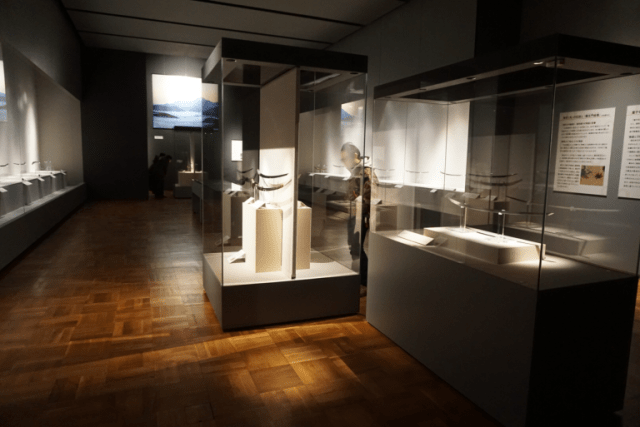
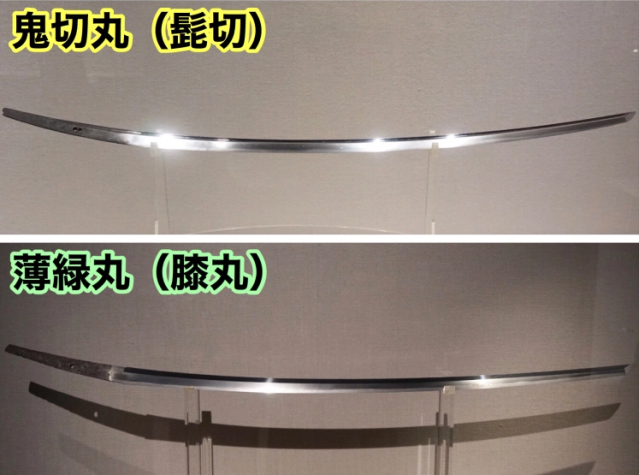
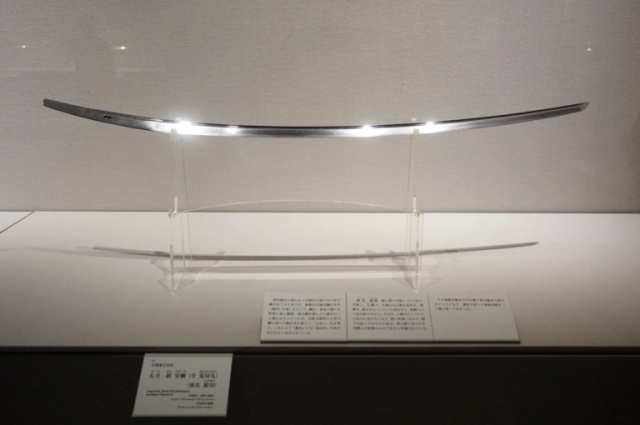
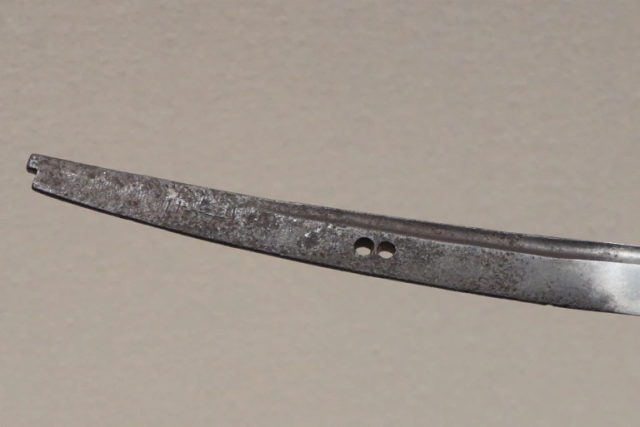
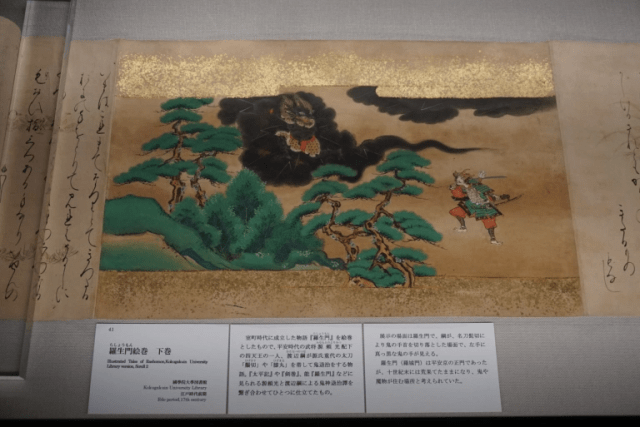
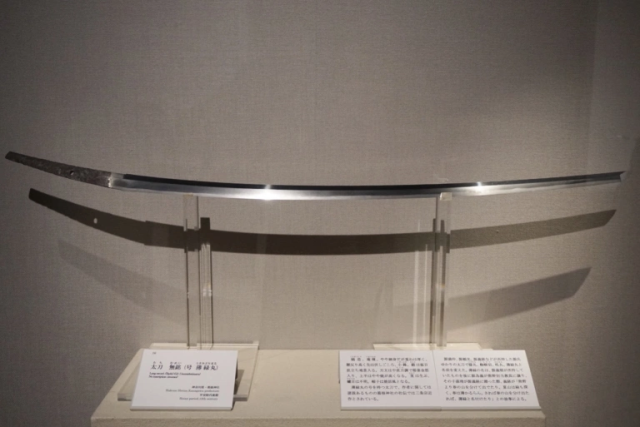
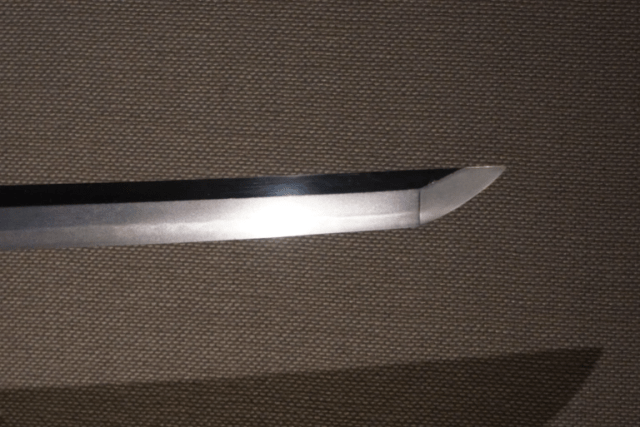
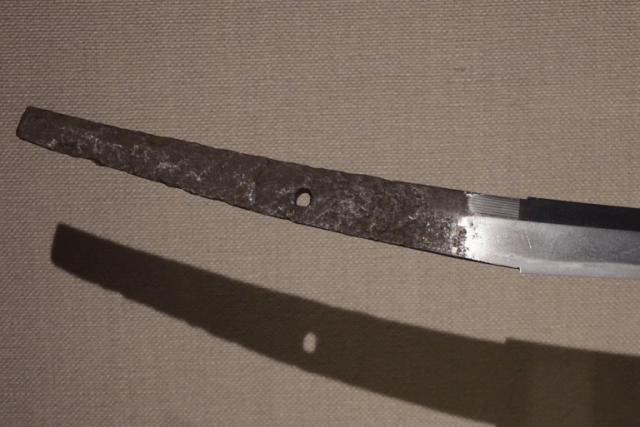
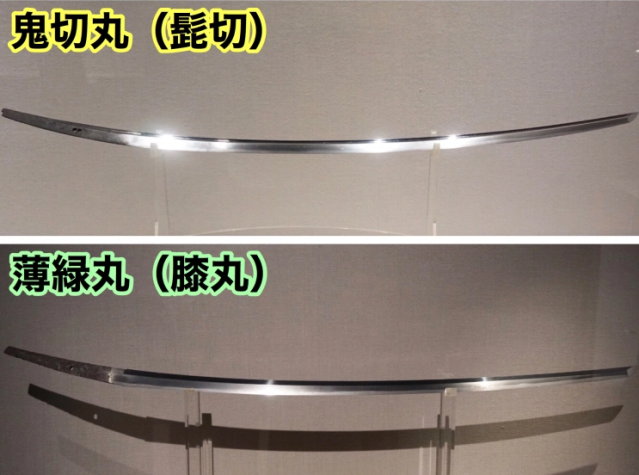
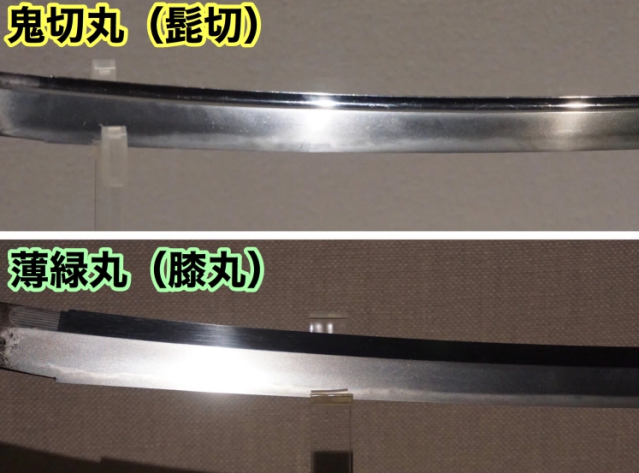
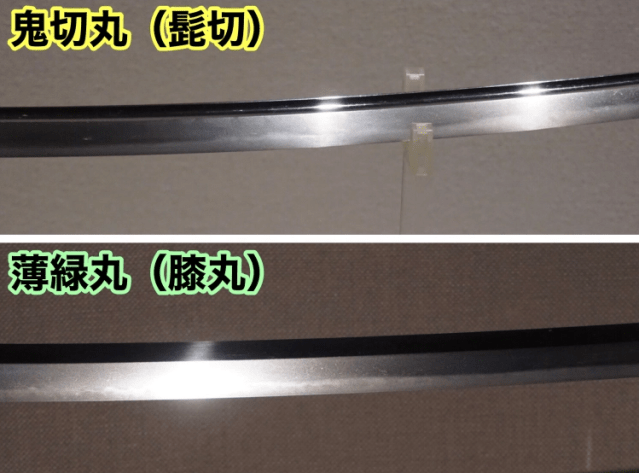
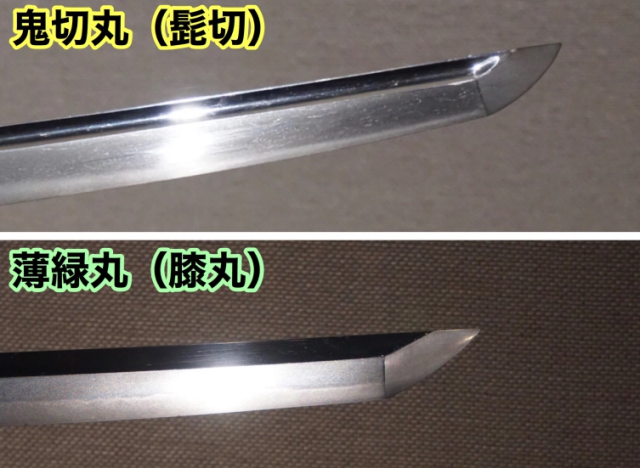
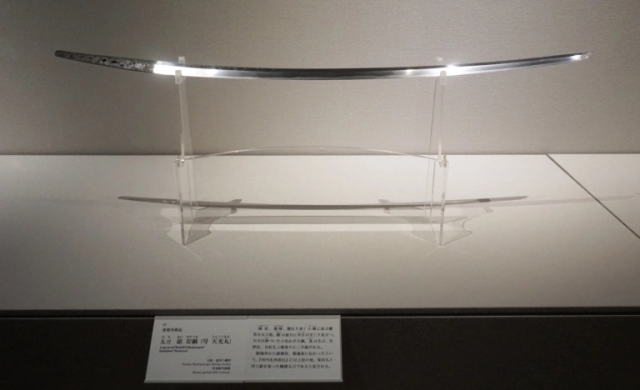
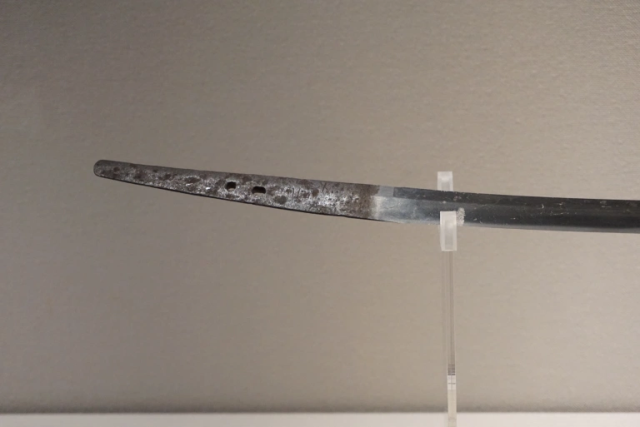
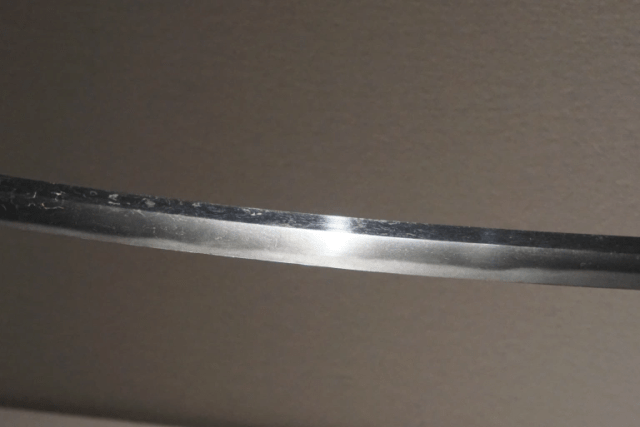
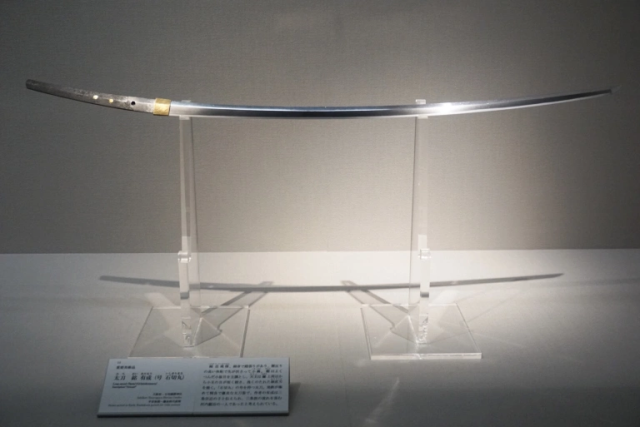
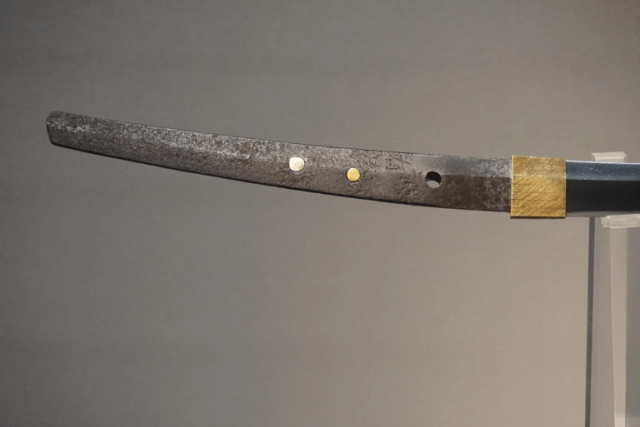
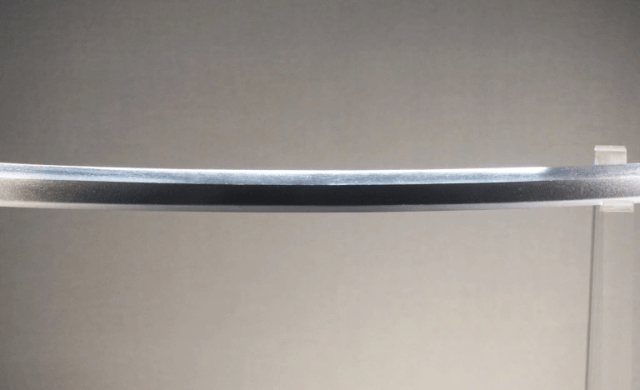
 Demon-slaying Dojigiri, one of Japan’s Five Swords Under Heaven, now on display at Kasuga Shrine
Demon-slaying Dojigiri, one of Japan’s Five Swords Under Heaven, now on display at Kasuga Shrine This hotel has one of the coolest katana collections in Japan, and admission is totally free【Pics】
This hotel has one of the coolest katana collections in Japan, and admission is totally free【Pics】 Dojigiri, the millennium-old katana said to have slain a demon, is now on display in Tokyo【Pics】
Dojigiri, the millennium-old katana said to have slain a demon, is now on display in Tokyo【Pics】 Real-life Rurouni Kenshin reverse-blade katana, forged by master swordsmith, now on display【Pics】
Real-life Rurouni Kenshin reverse-blade katana, forged by master swordsmith, now on display【Pics】 Real-life Rurouni Kenshin katana forged based on sword of series’ most merciless villain【Photos】
Real-life Rurouni Kenshin katana forged based on sword of series’ most merciless villain【Photos】 Foreigner’s request for help in Tokyo makes us sad for the state of society
Foreigner’s request for help in Tokyo makes us sad for the state of society Should you add tartar sauce to Japanese curry rice? CoCo Ichi makes diners an unusual offer
Should you add tartar sauce to Japanese curry rice? CoCo Ichi makes diners an unusual offer Seaside scenery, history, and so many desserts on Yokohama’s Akai Kutsu【Japan Loop Buses】
Seaside scenery, history, and so many desserts on Yokohama’s Akai Kutsu【Japan Loop Buses】 Japanese city loses residents’ personal data, which was on paper being transported on a windy day
Japanese city loses residents’ personal data, which was on paper being transported on a windy day Ghibli Park now selling “Grilled Frogs” from food cart in Valley of Witches
Ghibli Park now selling “Grilled Frogs” from food cart in Valley of Witches Red light district sushi restaurant in Tokyo shows us just how wrong we were about it
Red light district sushi restaurant in Tokyo shows us just how wrong we were about it Harajuku Station’s beautiful old wooden building is set to return, with a new complex around it
Harajuku Station’s beautiful old wooden building is set to return, with a new complex around it Akihabara pop-up shop sells goods made by Japanese prison inmates
Akihabara pop-up shop sells goods made by Japanese prison inmates Osaka governor suggests lowering voting age to 0 to curb population decline
Osaka governor suggests lowering voting age to 0 to curb population decline The 2023 Sanrio character popularity ranking results revealed
The 2023 Sanrio character popularity ranking results revealed McDonald’s new Happy Meals offer up cute and practical Sanrio lifestyle goods
McDonald’s new Happy Meals offer up cute and practical Sanrio lifestyle goods Japanese ramen restaurants under pressure from new yen banknotes
Japanese ramen restaurants under pressure from new yen banknotes French Fries Bread in Tokyo’s Shibuya becomes a hit on social media
French Fries Bread in Tokyo’s Shibuya becomes a hit on social media Studio Ghibli releases new action figures featuring Nausicaä of the Valley of the Wind characters
Studio Ghibli releases new action figures featuring Nausicaä of the Valley of the Wind characters New private rooms on Tokaido Shinkansen change the way we travel from Tokyo to Kyoto
New private rooms on Tokaido Shinkansen change the way we travel from Tokyo to Kyoto Tokyo Tsukiji fish market site to be redeveloped with 50,000-seat stadium, hotel, shopping center
Tokyo Tsukiji fish market site to be redeveloped with 50,000-seat stadium, hotel, shopping center Beautiful Ghibli sealing wax kits let you create accessories and elegant letter decorations【Pics】
Beautiful Ghibli sealing wax kits let you create accessories and elegant letter decorations【Pics】 Studio Ghibli releases Kiki’s Delivery Service chocolate cake pouches in Japan
Studio Ghibli releases Kiki’s Delivery Service chocolate cake pouches in Japan New definition of “Japanese whiskey” goes into effect to prevent fakes from fooling overseas buyers
New definition of “Japanese whiskey” goes into effect to prevent fakes from fooling overseas buyers Our Japanese reporter visits Costco in the U.S., finds super American and very Japanese things
Our Japanese reporter visits Costco in the U.S., finds super American and very Japanese things All-you-can-drink Starbucks and amazing views part of Tokyo’s new 170 meter-high sky lounge
All-you-can-drink Starbucks and amazing views part of Tokyo’s new 170 meter-high sky lounge More foreign tourists than ever before in history visited Japan last month
More foreign tourists than ever before in history visited Japan last month New Pokémon cakes let you eat your way through Pikachu and all the Eevee evolutions
New Pokémon cakes let you eat your way through Pikachu and all the Eevee evolutions Disney princesses get official manga makeovers for Manga Princess Cafe opening in Tokyo
Disney princesses get official manga makeovers for Manga Princess Cafe opening in Tokyo Sales of Japan’s most convenient train ticket/shopping payment cards suspended indefinitely
Sales of Japan’s most convenient train ticket/shopping payment cards suspended indefinitely Sold-out Studio Ghibli desktop humidifiers are back so Totoro can help you through the dry season
Sold-out Studio Ghibli desktop humidifiers are back so Totoro can help you through the dry season Japanese government to make first change to romanization spelling rules since the 1950s
Japanese government to make first change to romanization spelling rules since the 1950s Ghibli founders Toshio Suzuki and Hayao Miyazaki contribute to Japanese whisky Totoro label design
Ghibli founders Toshio Suzuki and Hayao Miyazaki contribute to Japanese whisky Totoro label design Doraemon found buried at sea as scene from 1993 anime becomes real life【Photos】
Doraemon found buried at sea as scene from 1993 anime becomes real life【Photos】 Tokyo’s most famous Starbucks is closed
Tokyo’s most famous Starbucks is closed One Piece characters’ nationalities revealed, but fans have mixed opinions
One Piece characters’ nationalities revealed, but fans have mixed opinions We asked a Uniqlo employee what four things we should buy and their suggestions didn’t disappoint
We asked a Uniqlo employee what four things we should buy and their suggestions didn’t disappoint Princesses, fruits, and blacksmiths: Study reveals the 30 most unusual family names in Japan
Princesses, fruits, and blacksmiths: Study reveals the 30 most unusual family names in Japan Legendary crescent moon katana, one of Japan’s Five Swords Under Heaven, now on display in Tokyo
Legendary crescent moon katana, one of Japan’s Five Swords Under Heaven, now on display in Tokyo Genuine Muramasa blade and Muromachi katana on display at Tokyo’s Touken Ranbu store【Photos】
Genuine Muramasa blade and Muromachi katana on display at Tokyo’s Touken Ranbu store【Photos】 Real-life Rurouni Kenshin reverse-blade katana now on display in Tokyo【Photos】
Real-life Rurouni Kenshin reverse-blade katana now on display in Tokyo【Photos】 One Piece anime katanas recreated as exquisite letter openers by Japan’s swordsmith legacy heirs
One Piece anime katanas recreated as exquisite letter openers by Japan’s swordsmith legacy heirs Real-life Rurouni Kenshin reverse-blade sword to be displayed in Tokyo
Real-life Rurouni Kenshin reverse-blade sword to be displayed in Tokyo Japanese samurai sword ice cream crafted by master swordsmith from famous katana town of Seki
Japanese samurai sword ice cream crafted by master swordsmith from famous katana town of Seki Amazing exhibition of Japan’s legendary “cursed katana” is going on right now【Photos】
Amazing exhibition of Japan’s legendary “cursed katana” is going on right now【Photos】 Japan is running out of swordsmiths, and a strict apprenticeship requirement is a big reason why
Japan is running out of swordsmiths, and a strict apprenticeship requirement is a big reason why Mini samurai sword scissors are here to help you slice paper and plastic foes to pieces【Photos】
Mini samurai sword scissors are here to help you slice paper and plastic foes to pieces【Photos】 Swords of famous samurai reborn as beautiful kitchen knives from Japan’s number-one katana town
Swords of famous samurai reborn as beautiful kitchen knives from Japan’s number-one katana town Katana that shoot flames are real in amazing Japanese artist’s video series【Videos】
Katana that shoot flames are real in amazing Japanese artist’s video series【Videos】 Scholars confirm first discovery of Japanese sword from master bladesmith Masamune in 150 years
Scholars confirm first discovery of Japanese sword from master bladesmith Masamune in 150 years Jewelry forged with Japanese sword-making techniques are a cut above the rest
Jewelry forged with Japanese sword-making techniques are a cut above the rest Final Fantasy artist Yoshitaka Amano anthropomorphizes katana made from a meteorite
Final Fantasy artist Yoshitaka Amano anthropomorphizes katana made from a meteorite Ingenious cosplayer shows us how to make sword blades nearly two meters long for a few bucks
Ingenious cosplayer shows us how to make sword blades nearly two meters long for a few bucks Japanese city famous for its production of swords and knives now has katana-shaped ice cream
Japanese city famous for its production of swords and knives now has katana-shaped ice cream
Leave a Reply